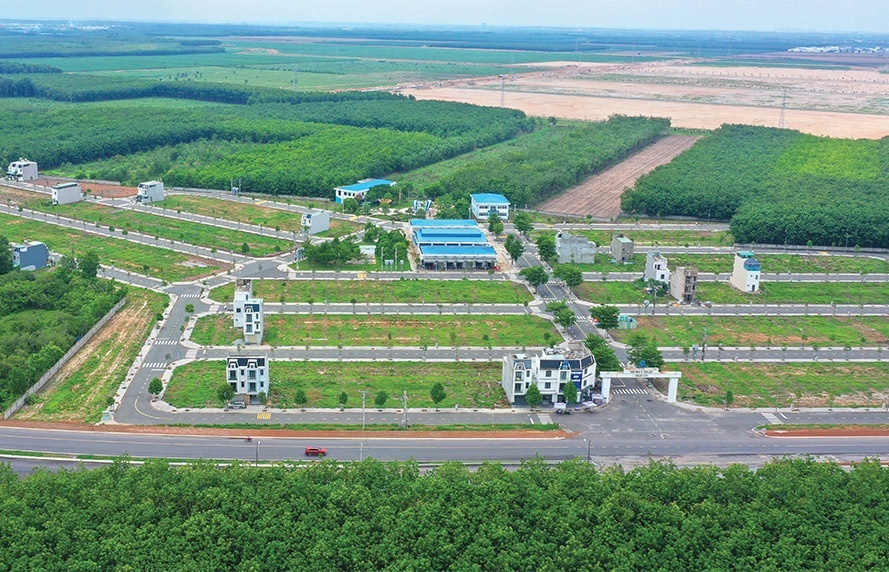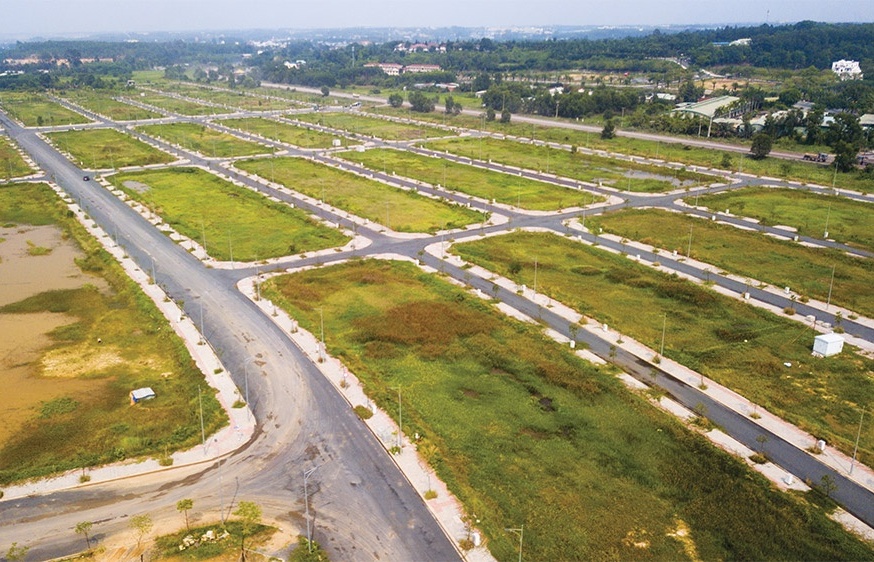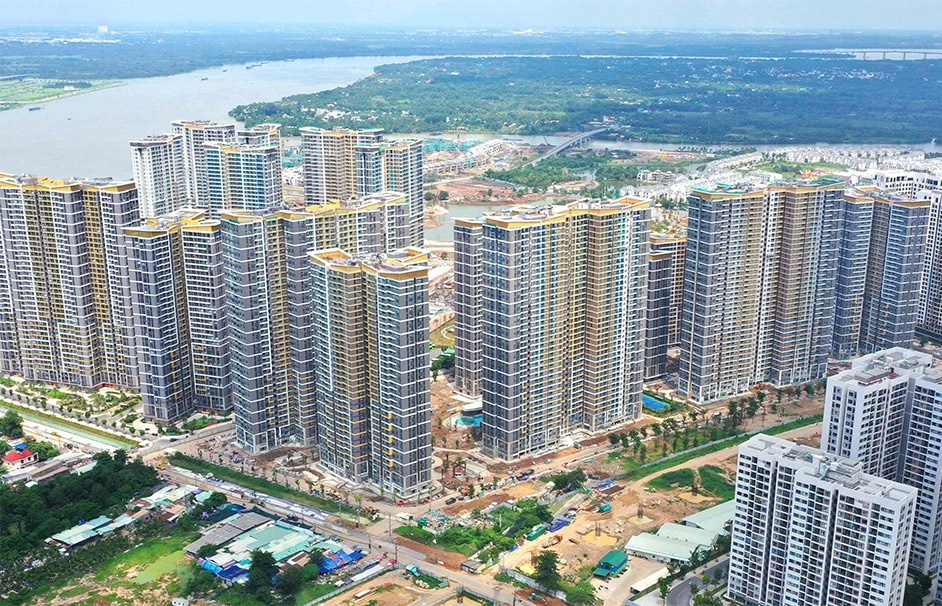Warmer times for Vietnam’s frozen property market

Many participants said the market would be better by the year’s end and deputy minister of Planning and Investment Dang Huy Dong said the government was seeking to deal with the country’s economic difficulties and Resolution 02 introduced important measures to help ensure property market stability and growth.
The State Bank has also rolled out many measures to support the market, paving the way for low-income people to buy houses. In May, the central bank for the second time this year reduced the prime interest rates to help banks further cut down lending rates. Some banks have launched low-interest credit packages.
Four state-run commercial banks – Agribank, BIDV, Vietcombank and VietinBank – have slashed their lending rates to below 13 per cent.
Meanwhile, the State Bank has just introduced a VND30 trillion ($1.4 billion) credit package to lend state employees, people in the armed forces and low-income people to lease or buy social housing and commercial housing which is below 70 square metres and costing at most VND15 million ($720) per square metre, as well as corporate customers engaged in building social housing or commercial housing converted into social housing. The package’s lending rate is 6 per cent, per year.

The package had drawn big public attention, said Nguyen Viet Manh, head of the State Bank’s Credit Department. He said the credit package was involved with the State Bank and the Ministry of Construction.
Sacombank deputy CEO Phan Dinh Tue said he thought it was a positive move to support the market. He said Sacombank early this year launched a VND1,600 billion ($76.5 million) housing loan package and disbursed VND1,350 billion ($64.6 million) to 240 clients.
Chris Brown, general manager of Cushman and Wakefield Vietnam, said distressed assets had widened market opportunities.
He said Vietnam’s real estate market had been stumbling, with a lack of capital resources punishing many developers unable to finish or continue their projects. Many developers have had to restructure their portfolios to focus on their core and important projects to find ways to take over distress assets.
Brown said some commentators suggested that real estate could make up over 70 per cent of non performing loans in Vietnam. However, bad debts and their assets have not been available for investors to acquire openly from banks or investors.
“The situation is toxic and unless both banks and investors move quickly to deleverage then the recovery will be a lot slower and more painful. There are clear signs of distressed property assets all over Vietnam. It is just a matter of time before they come to the market,” said Brown.
He said the newly-established Vietnam Assets Management Company’s budget was limited compared to NPLs. Meanwhile, NPLs are not attractive to investors at the book value as the reality is they have decreased the loans by 30-40 per cent.
Dang Hung Vo, former deputy minister for Natural Resources and Environment, also said the NPL problem must be solved first.
An idea floated at the seminar was Vietnam to make it easier for foreigners to buy housing in the country. Nam said the Vietnamese government started to allow foreigners to buy housing in 2008 with strict requirements. He added this October, the National Assembly would consider approval proposals already made to make it easier. He said he was leading a group that made the proposals.
Participants said they expected the National Assembly would act rapidly towards the issue.
Another market problem was land pricing was high, said Brown. Vo said Vietnam should change its land tax policy to reduce land pricing. Vo added due to high land pricing, property pricing was many times higher than the levels the market could accept. However, it takes time to cut land pricing by changing policies.
Nam said the government was now concentrating efforts on its national housing development strategy. To that end, the Ministry of Construction (MoC) has urged localities to scale up construction of social housing projects to gradually meet people’s demand. A total 157 social housing projects are now in the development pipeline nationwide with 68,500 apartments altogether, including 58 social housing projects earmarked for low-income people with more than 33,000 apartments, and 99 social housing projects for workers with 35,500 apartments.
Some large-scale social housing programmes underway such as ones in Binh Duong province developed by Becamex IDC, in Dong Nai province by the MoC’s IDICO, in Hanoi by the MoC’s HUD, and many other projects in other provinces and cities.
Nam said property market problems would be gradually addressed in the coming period when the National Assembly approves the amended Corporate Income Tax and amended Value Added Tax, with diverse tax incentives and when the government’s $1.4 billion credit package begins to be disbursed.
What the stars mean:
★ Poor ★ ★ Promising ★★★ Good ★★★★ Very good ★★★★★ Exceptional
Latest News
More News
- Trump's trade policies could shape Vietnam's economic outlook: Dragon Capital (November 15, 2024 | 16:56)
- The One Destination partners with Singapore investor and institutional fund to build ESG real estate complex (November 11, 2024 | 10:32)
- Stabilising measures must sit alongside land price hikes (November 07, 2024 | 09:56)
- CapitaLand Development records strong bookings for Orchard Hill (November 07, 2024 | 08:19)
- Public transport and real estate: The rise of Transit Oriented Development (November 05, 2024 | 15:06)
- Funding flows to second-tier localities (November 03, 2024 | 15:24)
- Hanoi has long road to travel in becoming a smart city (November 03, 2024 | 15:00)
- Nam Long Group hands over keys to Akari City Phase 2 (October 30, 2024 | 18:29)
- KTG Industrial expands industrial footprint at Taitronics 2024 (October 29, 2024 | 14:46)
- Deal signed for sustainable development at Prodezi Eco-Industrial Park (October 26, 2024 | 10:02)



















 Mobile Version
Mobile Version